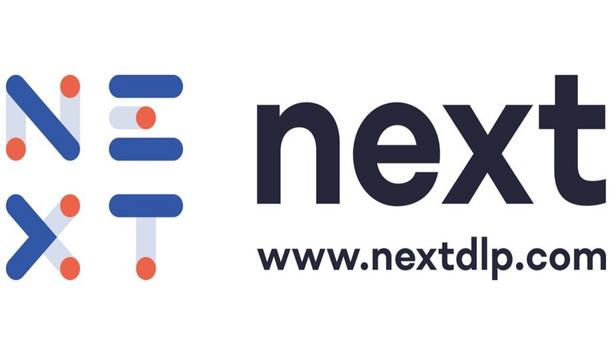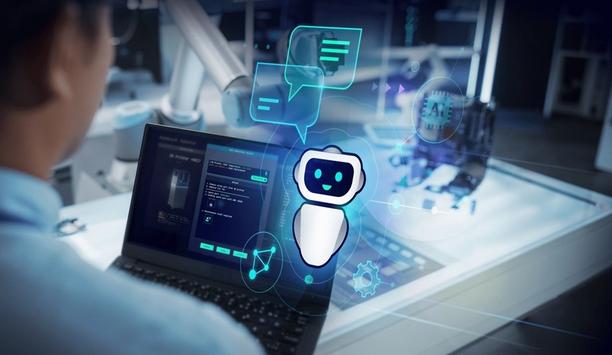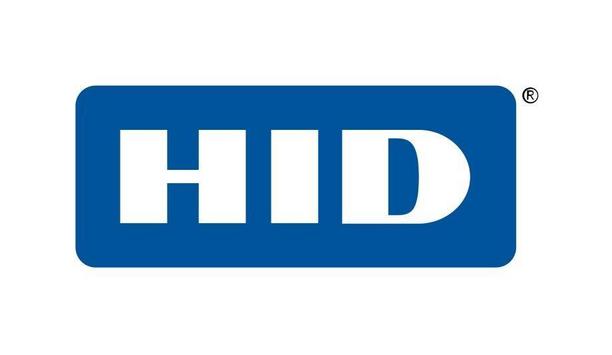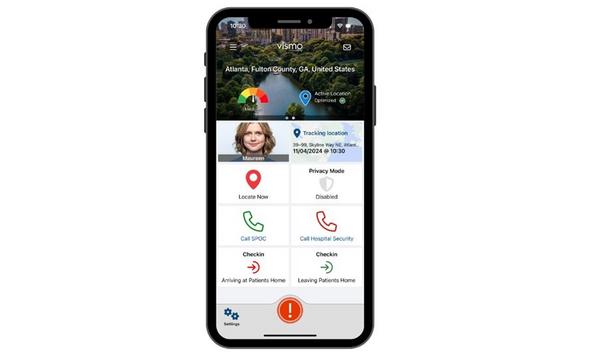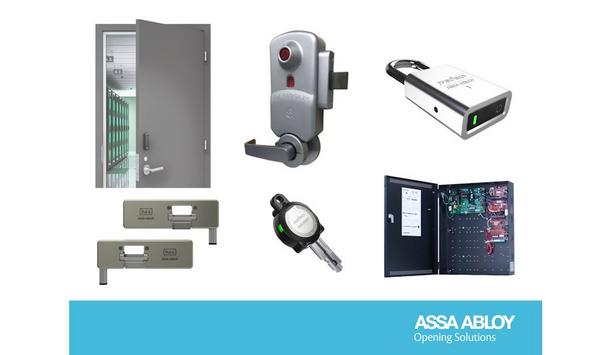How Is Data Changing The Physical Security Market?
Editor Introduction
Big data is a buzzword, and data – presumably of all sizes – is a driving force in the physical security market. As systems become more sophisticated and expand their capabilities, the result is more data; in some cases, a lot more data. But a key question is: What do we do with the data? How do we use it to provide value? How do we interpret it, and transform it into useful information and/or intelligence? We presented the topic of data to our Expert Panel Roundtable and came away with a range of thoughts on its changing – and expanding – role in the physical security market (and beyond). We asked this week’s Expert Panel Roundtable: How is a greater emphasis on data changing the physical security market?
The “emphasis” on data is not only just beginning to affect the physical security market, but it is also impacting building automation and many other markets. As systems become more open and interoperable, the ability grows to mine the data produced by disparate and previously unconnected systems. There is a greater awareness that, by looking at hitherto unknown data relationships and trends, it is possible to find and exploit greater improvements in business processes and systems – perhaps leading to changes in the way we run and organize our businesses and organizations. The main drivers behind this are the Internet of Things, IP and Open Protocols, which allow interconnectivity and interoperability. I have no doubt we are at the beginning of some exciting developments in our market!
With regards to video data, gone are the days when investments are made solely based on the video captured. The market – and the demand from end users – is driving video data to be used in multiple ways, from traditional security footage to incorporating analytics that help marketing and business operations departments meet their goals. Video data is going beyond the physical security realm to create multi-department use cases that not only help leadership push to invest in surveillance cameras as a necessary capital investment, but also allow the cost to be distributed across departments using the footage for their own uses. Gathering video data has become paramount to the success of many departments within a single organization, which means video surveillance capabilities will be adopted more frequently and with more ease as time progresses.
Getting to data is the primary focus of most hackers. To attack Information Technology (IT) and critical infrastructure Operational Technology (OT) systems, hackers are looking for the easiest path in, leveraging many different physical assets, including those within the enterprise security system itself. They typically start with hardware which will give them access to specific computers. Then, those computers will give them access to both the target's external and internal Internet. Interestingly, some security people don’t seem to secure their own security equipment. For instance, IP wireless cameras and card readers in the access control system are favorite targets of hackers. Unsecured they can become irresistible backdoors. An attack on the IT system can create huge problems; from stealing personal information to transferring funds. The new trend of attacking the OT system can be even worse. When such data is hacked, havoc can run rampant.
In the past, it was difficult and almost impossible to merge varying data sets from multiple security systems into a consistent view in order to get a clear operational picture of security. Today, with the advent of PSIM solutions that integrate and normalise data from multiple different systems, along with visualization tools that allow you to view the interaction between otherwise unrelated data points in simple dashboards, we have the ability to unlock the power of this data. This gives CSOs and security managers the ability to immediately access areas of vulnerabilities and operational deficiencies, and to identify actions to remediate and improve team productivity. With this focus, security managers are taking on more corporate responsibility for safety and risk mitigation and adding business value beyond providing standard physical security.
In human terms, the amount of data a person accumulates over time – and how they apply that data – results in wisdom. Historically, data stored electronically is a point-in-time record of an event or data input that can be referenced to enhance a human’s ability to gain knowledge. The next revolution in the physical security market revolves around data analysis through deep learning that results in artificial intelligence and proactive guidance to humans. The idea is for the computer to gain wisdom through its learning experiences. To accomplish this, a vast amount of data must be analyzed: historical, real-time and across many disparate sources. This creates a requirement to store more data, leverage cutting-edge processing technologies to categorise and analyze all data points, and cooperate with other entities to share data for growing the base of intelligence.
Visiting the IFSEC 2017 show in London recently, large numbers of booths were emblazoned with data analytics claims. Large video screens showed colorful wobbly rectangles apparently tracking faces and bodies. Learning of both varieties, both “deep” and “machine,” were claimed by many more vendors than in 2016. The PSIM people offer to ingest data from such video content analysis (VCA) and combine with news from your access control, intruder detectors, locally perambulating cell phones, even geo-located and hash-tagged social media posts and online mass media news. The astounding growth in processor power and artificial intelligence software will cause the capabilities of currently very-high-end systems to trickle down into mid- to low-budget equipment. Add to this data from many IoT sensors, and machines might regurgitate something palatable that was missed by the overwhelmed Mk.1 Human. The value in that pre-digested information cannot be ignored to help physical security be more effective.
The increased emphasis on data offers more options for end users investing in security solutions by allowing them to utilize the data collected in other, non-security-related ways. For example, an access control solution can produce reports about door usage, allowing building managers to pinpoint whether an entrance or exit is overcrowded. Additionally, the use of analytics coupled with data collected from various access points in an enterprise organization can provide critical information to building managers on building occupancy so regulations can be followed. In some cases, access control data can be integrated with time and attendance/workforce productivity interfaces that alert management to potential issues and can also be checked against employee time cards. Not only does this gathering of data save money, it also delivers efficiency that wasn't present before. Not only does it provide safety and security, but the cost of implementing a solution can also be shared across departments.
I would argue that the greater emphasis on data is specifically due to the proliferation of data collection devices. As we all know, you cannot improve what you cannot measure, and today’s devices are measuring more than ever. In our work, it’s easy to see that data collection and measurement have actually risen at a higher rate than data analysis, which creates a significant opportunity. We think the most interesting opportunity within the physical security market is the ability to understand open-air location services and open-air security. Passing through gates as a way to organize human behavior into a measurable and trackable workflow is counter to the way we work, but was necessary in years past because of the way we collected and organized data. Allowing people to freely move about an area but still maintaining a level of surveillance (data collection) necessary to secure today’s infrastructure is the future.
Data is the new value proposition in the security market today. Just 15 years ago you could argue that security solutions were very binary — open/closed, on/off, video/no video. Today, not only has the cost of hardware solutions dropped significantly, but the data they provide is so much more rich and dynamic. Users are looking to use this valuable data to solve increasingly complex business problems. The solutions they are choosing to achieve these ambitions are Business Intelligence software platforms, capable of analyzing big data and serving up actionable results all in an attractive, user-friendly dashboard.
Making the right decisions based on available information is the end-goal of data collection for any industry. The physical security market continues to thrive following the paradigm shift from proprietary, closed solutions to open, standards-based options which enable new opportunities for the security profession. Today, data in physical security encompasses more than traditional risk mitigation objectives but is evolving to include bottom-line business intelligence through the repurposing of electronic countermeasures. Retailers have learned that they can measure store performance by referencing data collected from security cameras such as people counting, dwell time, and heat mapping. Data from these analytics provides information that retailers use to optimize staffing, merchandise placement, and queue management. This example demonstrates the opportunity security professionals have to increase their influence within the organization by providing information that is a direct result of data collected from devices they manage.
Editor Summary
Data is impacting multiple areas in (and related to) the physical security market. From building automation to managing building occupancy, from predictive capabilities to business intelligence, use of data is expanding the scope of what’s possible; not to mention its key role in enabling greater security, safety and more effective risk management. Availability of more data is happening in lockstep with development of new capabilities to analyze and interpret data, including sophisticated "deep learning" and artificial intelligence (AI) technologies. Data is an essential element in our current security environment, and its importance will continue to grow rapidly. In many ways, data will direct our future path.
- Related links
- ACT Access control controllers
- ACT Access control systems & kits
- ACT Access control software
- Axis Communications Access control controllers
- Axis Communications Access control software
- Axis Communications Video Surveillance software
- Axis Communications Intruder detectors
- Milestone Video Surveillance software
- Oncam Video Surveillance software
- Oncam Surveillance cameras
- TDSi Access control software
- TDSi Surveillance cameras
- TDSi Access control controllers
- TDSi Access control systems & kits
- TDSi Video Surveillance software
- TDSi Intruder detectors
- ACT Access control readers
- Axis Communications Video servers (IP transmission)
- Axis Communications IP cameras
- Axis Communications Access control readers
- Oncam IP cameras
- Pyramid Series Proximity Access control readers
- TDSi Video servers (IP transmission)
- TDSi IP cameras
- TDSi Access control readers
- ACT Access control cards/ tags/ fobs
- Pyramid Series Proximity Access control cards/ tags/ fobs
- TDSi Access control cards/ tags/ fobs
- Axis Communications Storage
- Seagate Storage
- Related categories
- Access control software
- Intruder alarm system control panels & accessories
- Intruder detectors
- Surveillance cameras
- Video Surveillance software
- Access control controllers
- Access control systems & kits
- IP cameras
- Video servers (IP transmission)
- Access control readers
- Access control cards/ tags/ fobs
- Storage
Expert commentary
Security beat
Security bytes
- Getting To Know Dan Grimm, VP And General Manager Of Computer Vision At RealNetworks
- Big Wins And The Importance Of Showing Up: Insights From SecurityInformed.com Editor Larry Anderson
- Setting Goals, Business Travels And Radioactivity: Success Secrets From Tiandy's John Van Den Elzen
- Getting To Know Jeff Burgess, President/CEO At BCDVideo
Healthcare security articles
Milestone Systems, a global pioneer in video technology, is at the forefront of the video security industry, emphasizing responsible technology innovation across its operations. The company will host...
Just like fighting against the spread of disease in a clinical environment, healthcare providers must mobilize, coordinate with interconnected partners, and apply sufficient budgetary resources to com...
VIPRE Security Group, a global pioneer and award-winning cybersecurity, privacy, and data protection company, released its Q1 2024 Email Threat Trends report, based on an analysis of 1.8 billion email...
Johnson Controls, the global pioneer for smart, healthy, and sustainable buildings, demonstrated complete building security solutions at ISC West 2024 in Las Vegas. The company showcased its comprehen...
Choosing the appropriate fingerprint technology for a given application is dependent on factors including the required level of security and matching accuracy, the desired capabilities and features, a...
ASIS International, the world’s largest association for security management professionals, has announced its programming lineup for Global Security Exchange (GSX) 2024 with in-person and di...
Next DLP, a pioneer in data loss prevention and insider threat solutions announced that their Reveal Platform is the first Insider Risk Management solution to automatically map detection events to MIT...
The Security Executive Council, with Rice University and MD Anderson Cancer Center, will facilitate a day and a half of expert-led sessions on workplace violence risk management for corporate security...
At Hannover Messe 2024, Siemens presents the first generative artificial intelligence (AI) product for engineering in an industrial environment. Siemens Industrial Copilot The Siemens Industrial Cop...
HID, the pioneer in trusted identity solutions, announces it has been positioned by Gartner® as a Pioneer in its 2024 Magic Quadrant for Indoor Location Services. The evaluation was based on speci...
Vismo will launch the latest version of its Locate & Protect App at the International Association for Healthcare Security and Safety (IAHSS) Annual Conference and Exhibition 2024, at booth #713, f...
ASSA ABLOY Opening Solutions will be exhibiting an expanded range of innovative products at booth #8061 during ISC West. With access and intrusion risks rising in schools, healthcare spaces, and worsh...
Cohesity, a pioneer in AI-powered data security and management, announced it is collaborating with Intel to bring Intel’s confidential computing capabilities to the Cohesity Data Cloud. Leverage...
Identiv, Inc., a global digital security and identification pioneer in the Internet of Things (IoT), has entered into a definitive asset purchase agreement to sell its physical security, access card,...
Thailand’s pioneering fair for security and fire safety for commercial and industrial premises, announced at the press conference at Grand Hyatt Erawan Bangkok that the 2024 edition will return...
Multi-Residential Access Management And Security
DownloadGuide For HAAS: New Choice Of SMB Security System
DownloadPrecision And Intelligence: LiDAR's Role In Modern Security Ecosystems
DownloadHikvision: Solar Powered Product Introduction + HCP
DownloadGunshot Detection
DownloadVerkada TD52 Cloud-Based Video Intercom
exacqVision IP08-64T-R1XW-E X-Series 1U Rdnt IP NVR 64TB RAID5 Windows OS with 8 IP Ent Lic
Climax Technology TouchPanel-3 7” Color Graphic Touchscreen Panel




















